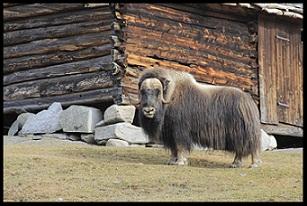There have been three attempts to extend the genetic variation for the Swedish musk ox.

The metapopulation management program was running in Sweden between 2003 and 2006, and was both positive and negative for the wild population. The first musk ox in the program was “Ingemar” which was transported from wild to captivity in 2003. At that moment he was the father to most of wild musk ox. In 2004, “Willy” from Kolmården Wildlife Park was transported to the wild population. He become father to a calf, but the calf did not stay alive for a long time, without any foundlings behind its early death. Unfortunately both “Ingemar” and Willy died shortly after they came to the new habitats. In 2004, “Sofie” was transported from the wild to Järvzoo. The Zoo had recently imported “Pitorak” from Greenland, which she should mate with. After one year “Sofie” got pregnant and was transported back to wild. She gave birth to a male calf, “Pitorak Jr”, in May 2006. The DNA tests of the wild musk ox showed that the calf had two alleles which distinguished from other musk ox in the Scandinavian populations. “Pitorak Jr” became father of a calf in July 2010. Although all this efforts have been done for the Swedish musk ox population, are still near to get extirpated. The main reason for this is inbreeding, but also that the females are too old for reproduction (Groves, 1992; Lundh, N.G., 1992).
In spite of these efforts done for the Swedish musk ox, they are still near to go extinct. In the future the Musk ox centrum in Tännäs is going to reintroduce the newborn calves to the wild population; the facilitation also is used for research. In order to create better conditions for a larger genetic variation it is needed collaboration between the wild population, the captive musk ox from Musk ox centrum, and animals from Zoos. If this develops the genetic range will extend and chances of survival of musk ox will increase.
Responsible for this page:
Director of undergraduate studies Biology
Last updated:
05/18/11
